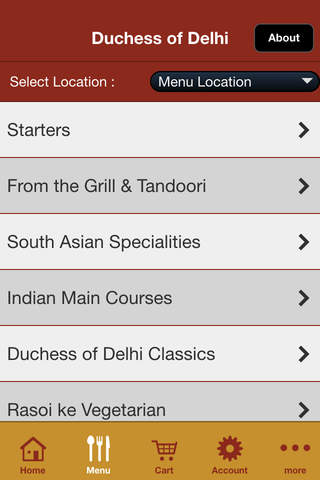
Duchess of Delhi
South Asian Restaurant Elegant interior and designAmidst Cardiff Bays picturesque waters and popular tourist spots sits a beautiful grade 2 listed building overlooking the Millennium Centre. Formally occupied by a Sea Captain and eventually the Glamorgan Coal Company in 1893, this building has witnessed the area grow from a coal exportation site to an area known as Tiger Bay. It now tells a very different story, marking the Asian food industry as commonplace in Britain.
The vibrant and artistic setting, reflective of the luxuriously rich colours of India, showcases the artwork of [mural artist] and stunning furnishings. The Duchess of Delhi creators have used designers and artists from around the globe who all possess one common goal; to create an authentic Indian restaurant. The interior style is classic, providing a warming surrounding by reflecting on the rich heritage of the Rajas and Moguls of India. The upstairs restaurant, the Nawab Lounge, includes a cosy seating area where guests can drink, relax and enjoy our beautifully crafted board games, making this an ideal location for families and gatherings - Seats up to 140 guests.
Take the Duchess Of Delhi experience today by making a reservation. Our Inspiration Mughal History. The word Mughal evokes visions of all that is grand in the Indian mind. National and Regional Styles of Cookery, Alan Davidson. The Mughal period in South Asia was a time of great power, culture, beautiful art and grand architecture. It began when a descendant of Genghis Khan, Prince Babur, conquered a vast amount of the Indian subcontinent in the early 16th century. Persians referred to this period as mughal and Babur was therefore the first Mughal Emperor. Baburs grandson Akbar continued to develop the massive Mughal Empire, extending their territory and eventually ruling the majority of India and Pakistan. It was Akbars grandson Shah Jahan, however, that arguably developed the rich and luxurious Mughal heritage. His liking for expensive jewels materialised in the form of luxurious monuments, mosques and temples. Shah Jahan also created one of the Seven Wonders of the World in memory of his wife Mumtaz Mahal; the grand Taj Mahal of India. Interestingly, emperors were traditionally weighed every year, and their equivalent weight in gold would be donated to the poor. Mughal cuisine represents the height of culinary excellence. National and Regional Styles of Cookery, Alan DavidsonMughal feasts were extravagant affairs, with lots of fruit, nut and creamy dishes, garnished with gold and silver leaf. Some dishes were hot as they extra chilli and valuable spices such as saffron were added for their healing properties. In Recipes from the Middle East and Beyond, Sabrina Ghayour explains that, The Mughals were incredibly lavish, decadent and indulgent in everything they did and Mughlai cuisine was a spectacle to behold. The feasts were always elaborate with a wide variety of dishes. The cuisine is strongly influenced by the Persian cuisine of Iran and made popular the combinations of meat and poultry with fruits and nuts, which were thought of as incredibly opulent and luxurious. A creamy korma-like dish was said to be popular during this time. During the Mughal period in India, murals were a prominent feature of castles and palaces.â€â€“ The Empire of the Great Mughals, Annemarie Schimmel, The Duchess of Delhi embraces the traditional, lavish Mughal period with aspects of modernity. The restaurant draws inspiration from Shah Jahans peacock throne for its floor decoration, the Mughals creation of chess for the lounge areas board games, and their wealth in the luxurious, gold decor. Most importantly, the food is fit for an Emperor or Duchess!



